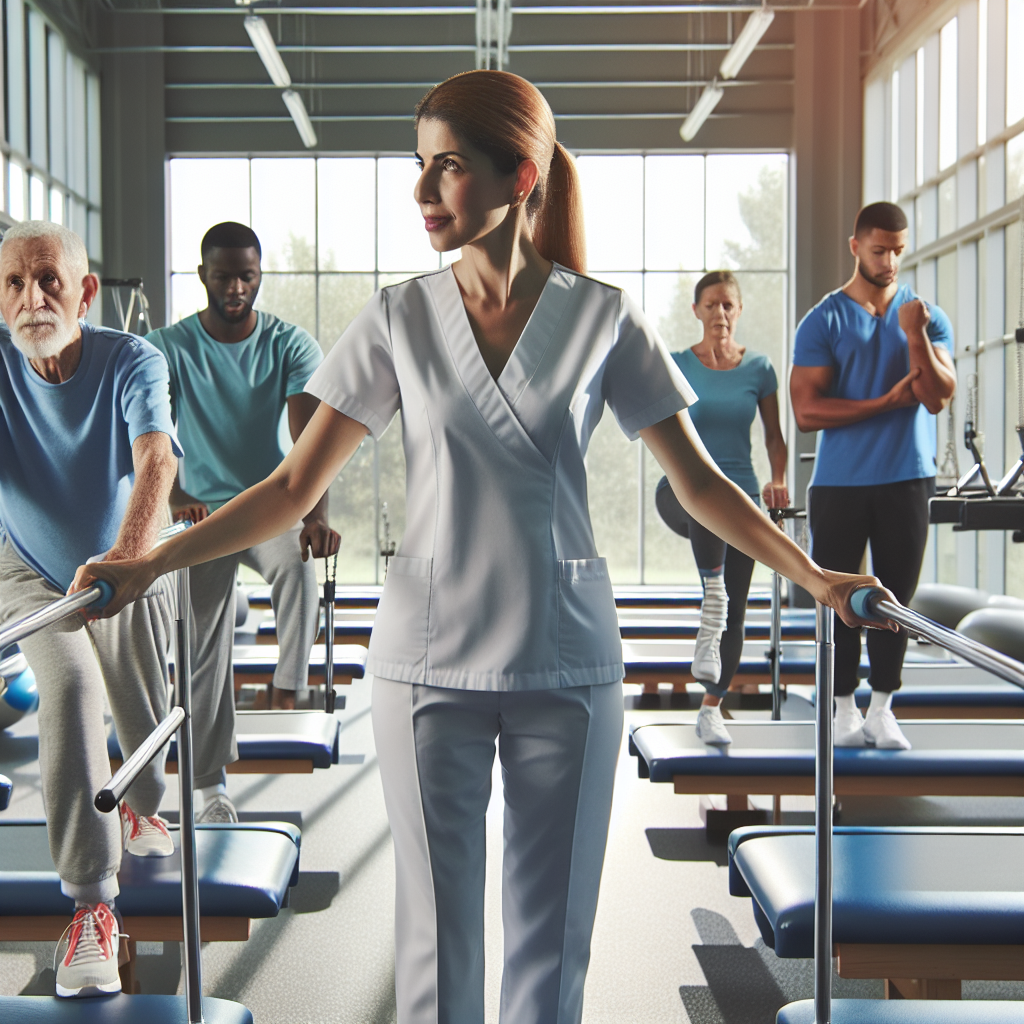How Do Neurorehabilitation Techniques Help In Improving Motor Function And Mobility?
Imagine suffering from a stroke or a traumatic brain injury that leaves you with limited mobility. Suddenly, simple tasks like reaching for a cup or walking to your mailbox become arduous endeavors. In this article, “How Do Neurorehabilitation Techniques Help In Improving Motor Function And Mobility?” you’ll learn how these modern techniques offer a beacon of hope. These innovative therapies aim to revitalize impaired functions by teaching the brain to reorganize and compensate, thereby improving your mobility and restoring normalcy to your life. Isn’t it fascinating to know that our brain possesses this remarkable ability to adapt and heal? This article will acquaint you with these techniques, their effectiveness, and how they might reshape your recovery process.

Understanding Neurorehabilitation
Definition of neurorehabilitation
Neurorehabilitation is a complex medical process which aims to support the recovery of people affected by neurological disorders and help them to attain an optimum level of social and cognitive function. It involves a series of therapies and medical treatments that work together to aid the recovery process of the neurological system.
Importance of neurorehabilitation in managing neurological disorders
Neurorehabilitation plays a critical role in managing neurological disorders such as stroke, Parkinson’s disease, multiple sclerosis, and traumatic brain injuries. It focuses not only on the medical management of these conditions, but also on reducing the disabling effects, enhancing the quality of life, and promoting reintegration into the community. By improving physical capabilities and enhancing cognitive skills, patients are empowered to lead a more active and fulfilling life.
Goals and objectives of neurorehabilitation
The primary goal of neurorehabilitation is to create a supportive environment that assists patients in regaining independence and achieving their highest possible level of functionality. It focuses on improving mobility, enhancing cognition, and enhancing overall strengths. Objectives may include the reduction of symptoms, the prevention of complications, and the teaching of coping strategies for managing everyday activities.
Types of Neurorehabilitation Techniques
Physical therapy
Physical therapy is a key component of neurorehabilitation. It helps patients regain strength, coordination, balance, and endurance. Through exercises and manual therapy, physical therapists aid patients in improving their movement and functional ability.
Occupational therapy
Occupational therapy helps people to perform daily tasks independently. For individuals with neurological disorders, occupational therapy can help improve motor and cognitive abilities, promote adaptive strategies, and modify the environment to better support their activities of daily living.
Speech and language therapy
Many neurological disorders can affect speech and language ability. Speech and language therapists work to improve communication skills, swallowing difficulties, and cognitive abilities related to language.
Cognitive rehabilitation
This focuses on improving memory, attention, and higher-level cognitive abilities affected by neurological disorders. Cognitive therapists use a range of techniques to help patients manage cognitive impairments and improve their daily function.
Impact of Neurorehabilitation on Motor Function
Improving strength and endurance
Neurorehabilitation can significantly improve the strength and endurance of patients with neurological conditions. Exercise programs are designed specifically to target weakened areas of the body, gradually building strength and endurance over time.
Regaining control over motor skills
Motor skills are often affected by neurological disorders, and regaining control over these skills is crucial for functional independence. Neurorehabilitation therapies focus on exercises and activities that help to retrain motor skills, such as walking, writing, or eating.
Enhancing motion coordination and balance
Coordination and balance difficulties are common in neurological conditions. Through targeted physical and occupational therapy, patients can learn to better coordinate their movements and improve their balance, reducing the risk of falls and enhancing overall mobility.

Role of Neurorehabilitation in Enhancing Mobility
Training for assistive devices
Assistive devices such as walkers, canes, or wheelchairs can greatly enhance mobility for individuals with mobility difficulties. Neurorehabilitation includes training on how to use these devices effectively and safely.
Adapting to environmental modifications
Environmental modifications, such as adding ramps or grab bars, can make it easier for people with limited mobility to move around their environment. As part of neurorehabilitation, patients learn to adapt to these modifications and integrate them into their daily routine.
Stand and gait training
Standing and walking are significant markers of mobility and independence. Specially trained therapists can provide stand and gait training to help individuals regain the ability to stand and walk correctly, enhancing their mobility.
Neural Plasticity and Neurorehabilitation
Understanding neural plasticity
Neural plasticity is a fundamental property of the nervous system that allows it to adapt and change in response to experience and damage. It forms the basis of learning and memory and plays a significant role in recovery after neurological injury.
Influence of neurorehabilitation on neural plasticity
Neurorehabilitation therapies offer controlled, repetitive, and intensive experiences that are known to drive neural plasticity. As such, neurorehabilitation can influence neural plasticity to improve sensorimotor and cognitive function.
Impact of enhanced neural plasticity on motor function and mobility
Enhanced neural plasticity can lead to significant improvements in motor function and mobility. As the brain and nervous system adapt and reorganize, this can lead to improvements in strength, coordination, balance, and overall mobility.
Use of Technology in Neurorehabilitation
Assistive technology devices
There are a wide range of assistive technology devices that can be used in neurorehabilitation, including mobility aids, communication devices, and adaptive computers. These devices can significantly enhance independence and quality of life.
Robot-assisted therapy
Robot-assisted therapy is increasingly being used in neurorehabilitation. Robots can help to deliver intensive, repetitive, and controlled therapy sessions, driving neural plasticity and aiding recovery.
Virtual reality therapy
Virtual reality provides an immersive, engaging method for delivering therapy. Using virtual reality, patients can practice real-world skills in a safe and controlled environment, which can help to enhance both physical and cognitive function.
Challenges in Implementing Neurorehabilitation Techniques
Patient-related factors
Patient-related factors such as age, level of disability, motivation, and support system can all influence the effectiveness of neurorehabilitation therapies.
Treatment-related factors
These may include the frequency and intensity of therapy, the type of therapeutic interventions used, and the presence of any adverse side effects.
Healthcare system-related factors
The availability of resources, the attitudes of healthcare professionals, insurance coverage, and the overall organization of the healthcare system can also affect the delivery and effectiveness of neurorehabilitation therapies.
Measuring the Effectiveness of Neurorehabilitation
Assessment methods
Effectiveness is typically measured through a variety of assessment methods, including clinical outcome measures, functional scales, and objective measures of activity and participation.
Factors affecting measurement outcomes
The effectiveness of neurorehabilitation may be influenced by a range of factors, including the level and type of neurological injury, the individual’s age and overall health, and the timing of the intervention.
Interpreting assessment results
Interpreting assessment results requires a comprehensive understanding of the measures used, as well as the potential impact of confounding variables. Long-term follow-up is often necessary to evaluate the sustained impact of neurorehabilitation therapies.
Future of Neurorehabilitation
Emerging technologies in neurorehabilitation
New technologies such as artificial intelligence, wearable sensors, and tele-rehabilitation are all expected to play a key role in the future of neurorehabilitation.
Anticipated advancements in neurorehabilitation techniques
There is a growing emphasis on personalized, patient-centered care, and this is expected to lead to the development of new, tailored neurorehabilitation techniques.
Future research directions in neurorehabilitation
Future research is expected to further elucidate the mechanisms of neural plasticity and to determine the most effective methods for driving and enhancing this plasticity in the context of neurorehabilitation.
Real-Life Case Studies of Neurorehabilitation
Success stories of people who benefited from neurorehabilitation
There are many inspirational success stories of people who, through neurorehabilitation therapies, were able to regain mobility and functional independence after a neurological injury or disease.
Lessons learned from failed neurorehabilitation attempts
While neurorehabilitation is often successful, there are also instances where it fails to yield the desired outcomes. Such cases offer valuable lessons for enhancing the effectiveness of neurorehabilitation therapies.
In-depth analysis of complex neurorehabilitation cases
Analysing complex neurorehabilitation cases can provide important insights into the challenges and opportunities associated with neurorehabilitation, and can help to inform and improve future practice.

